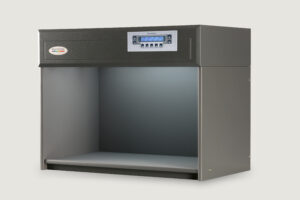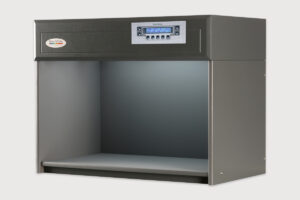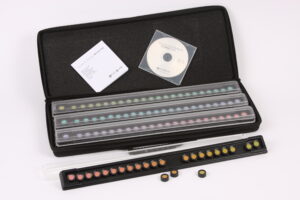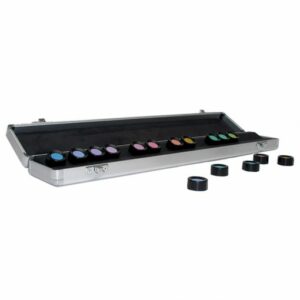A vital part of colour management is being efficient and effective in colour assessment. Colour assessment and measurement training benefits any industry where accurate colour assessment and communication can improve quality, competitiveness, or supply chain efficiency.
Our experts offer a range of colour training courses, from a general introduction to colour and visual colour assessment including advice on colour standards, Pantone, RAL and NCS, to product-specific training. Our colour courses are accredited by The Textile Institute.
It is also important to determine that your employees have good colour vision. Completing our vision testing programme, enables us to assess whether any colour deficiencies exist or if colour acuity needs improvement.
A vital part of colour management is using the equipment you have available correctly. The colour you see is affected by the type of light which you are viewing under, the background environment of the room, as well as the actual object being viewed.
If your team is not experienced in assessing colour, they may be making simple mistakes in the colour assessment process. Can you be sure that everyone understands what types of lighting you have available and how these relate to the lighting conditions under which your customers will see your products?
Not using the correct light sources to view the products or the correct colour terminology when communicating to the suppliers, can result in longer lead times or poorer quality.
Delays, customer returns, and faults all cost money and resources and eat into your profit margin.
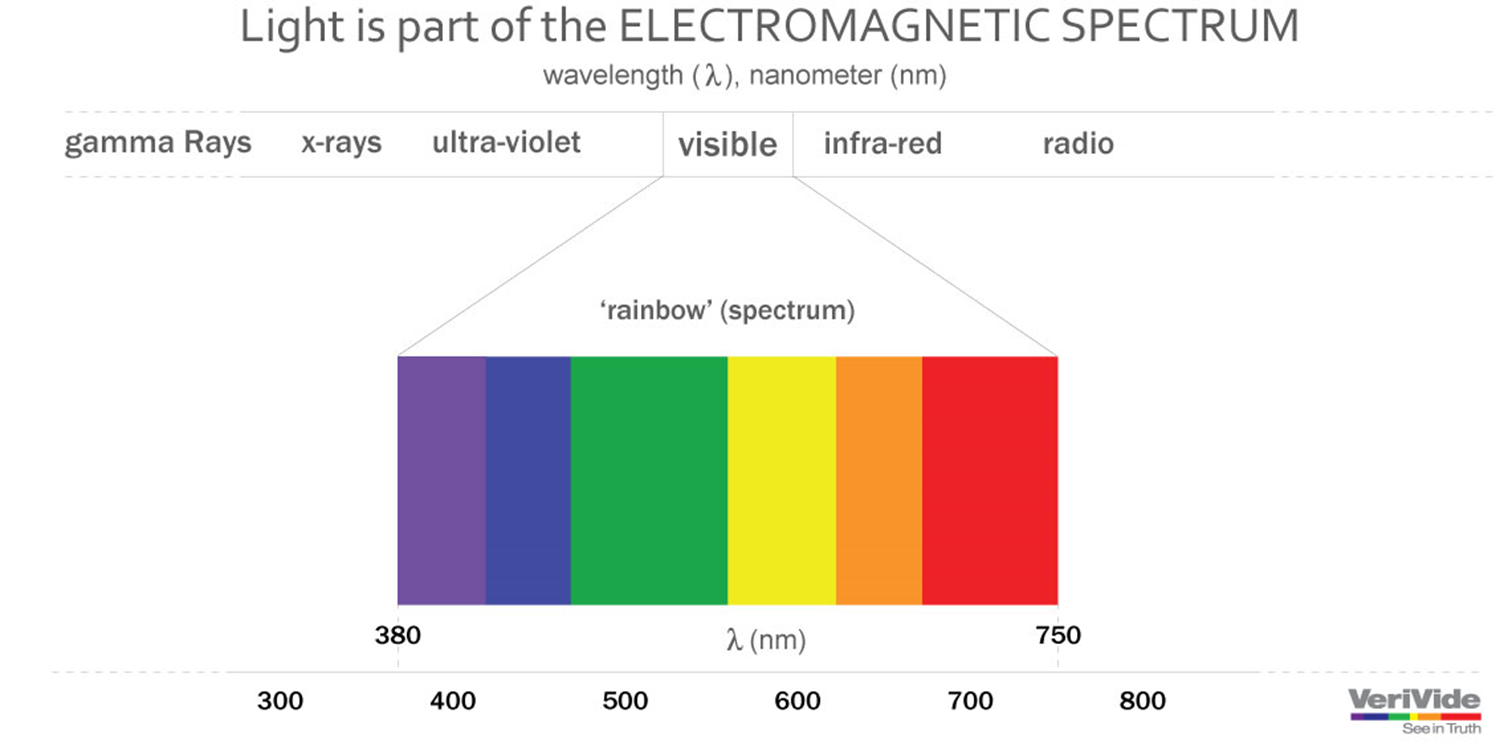
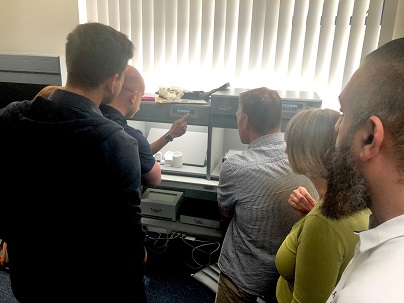
The way people see colour is subjective, everyone is different. Many will have a deficiency in how they view colour, also known as colour blindness. Even those with no colour vision deficiency can have poor colour acuity.
If you look at a red and think it’s a brown or olive colour, or you can’t see a difference between the colour of the standard and your prototype, but others can, it will have a detrimental effect on the product.
Our colour training course incorporates colour theory to improve understanding of what makes colour and how it is affected by light. The colour theory aspect of the course introduces colour communication using LCH colour terms which are understood by dyers, printers and other colour formulation industries.
We also include practical, hands-on training with VeriVide light booths to ensure attendees understand what the different lighting options are for and why they are important. Using only D65 is fine for an outdoor item which is sold online, just be aware that it may look a different colour at the customer’s home or under floodlights on a sports pitch. If your product will be displayed and used under multiple different lighting conditions, it is wise to check how the colour looks under those conditions.
Your team also needs to know how to advise your suppliers to provide samples in the best condition for them to assess.
If the colour is not what was expected, communicating the issues back to the manufacturer, enables them to better understand what to provide next time. Describing the colour problem as lightness/darkness, hue and chroma will minimise lead times and satisfy your customers.
If you require training with a particular colour standard system (Pantone, RAL, NCS) that can also be incorporated on request. We can also signpost you to one of the NCS online courses for NCS training.
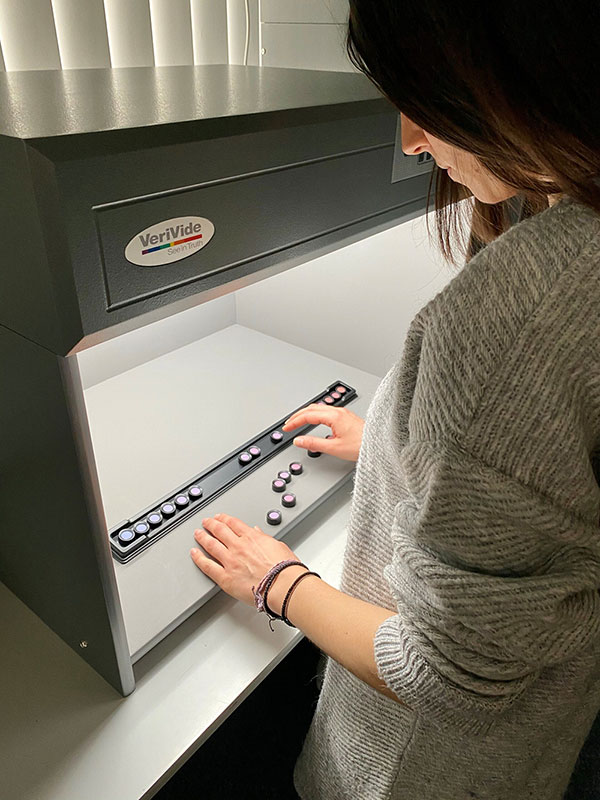
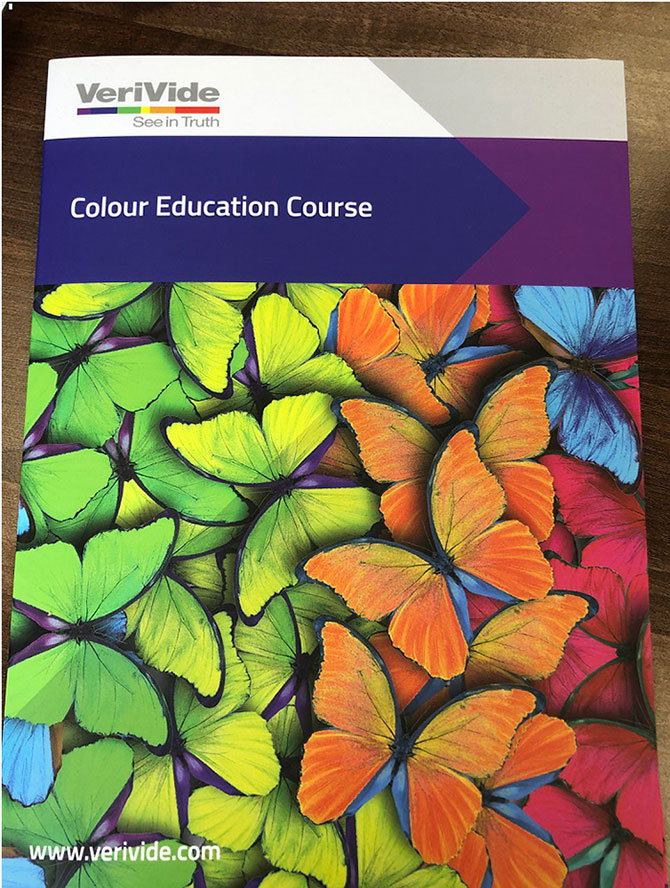
We offer bespoke colour training courses for individual companies. We are flexible in our approach and can adapt the content to your organisation’s specific needs, but typically we cover the following topics:
Courses can be held at VeriVide’s office near Leicester, which is easily accessible from most locations in the UK or at the client’s premises. The advantage to visiting VeriVide is that we have a showroom with several light booths available as well as other equipment to use in the practical exercises and demonstrations.
We recommend 4 people minimum to get the most value. If only one or two people need training, we suggest you get together with your suppliers or friends in the industry as you will benefit from working with others as well as the fee being more cost effective for you.
They are usually a full day.
VeriVide courses are for people in any industry where accurate colour assessment and measurement can improve quality, competitiveness, or supply chain efficiency. The courses are typically attended by designers, buyers, manufacturers, and product developers.
Yes, there is a relaxed atmosphere and the course duration is at your own pace, where questions can be taken throughout. We will also make available some contact details so you can ask follow up questions after the course.
Yes. Each attendee takes away a pack of course notes and datasheets which can be referred to next time they need to assess colour.
Not necessarily, but we encourage people to bring their own specific examples for the colour matching practise along with the colour standard used. These examples can be current products which they need advice about or strike offs and lab dips which have been a struggle to achieve previously.
